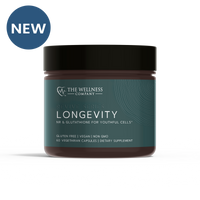The Healing Power of Now: Mindfulness Meditation for Chronic Pain

Chronic pain is a pervasive issue, affecting an estimated 20% of people worldwide. It's a leading cause of disability and – as anyone who suffers from it knows – an affliction that can significantly hamper one’s quality of life. Despite the prevalence and immense global burden of chronic pain, treatment options are limited and not without unwanted side-effects.
In this context, the search for alternative, non-pharmacological interventions for pain management has become increasingly important. One such intervention that has shown promise in this regard is mindfulness meditation. The rationale for this practice as an painkiller emerged in part from research performed by Dr. Fadel Zeidan, a scientist at the University of North Carolina.
In one of Dr. Zeidan’s most intriguing experiments, he and his team recruited a group of 18 volunteers and subjected them to a painful stimulus (in the form of a hot probe poking their lower leg) while the subjects were inside a functional MRI scanner which was imaging their brain. After being poked with the painful stimulus, each participant was asked to rate the intensity of their pain.
Participants were then divided into two groups: one group received four brief sessions of instruction in mindfulness meditation – in which they were taught the skill of non-judgmentally watching their thoughts, emotions, and bodily sensations – while the other group was left untrained. After the training sessions, the researchers repeated the hot probe process once more and obtained a second pain intensity rating.
The results were striking. The group that received mindfulness training reported a 40% reduction in pain intensity and 57% reduction in “pain unpleasantness” in comparison to the first exposure. Some subjects had decreases in pain as high as 93%. The untrained group, by contrast, did not exhibit reductions in reported pain compared to the first trial.
How exactly does mindfulness meditation achieve this effect? The neuroscience is quite complicated, but fundamentally, it appears that learning to meditate teaches people that sensations, feelings, and emotions (like pain) are temporary, fleeting occurrences. This then affords them the ability to let go of unpleasant sensations sooner than they otherwise might. Trying to resist a negative feeling like pain, paradoxically, tends to amplify it.
Mindfulness encourages an orientation of curiosity with respect to the character of the present moment. This can shorten the half-life and reduce the intensity of typically unpleasant experiences, even ones that sometimes seem intractable, like intense pain.
These findings align with the now well-established fact that pain is not closely linked to tissue damage. In other words, the intensity of pain is not solely determined by the extent of bodily harm. Our perception of pain is more about our nervous system’s perception of threat, a calculation heavily influenced by our past experiences, emotions, and expectations. By cultivating a mindful state, we become – at least to some extent – more comfortable sitting with discomfort. A hot probe to the lower leg still hurts, but it’s less of a threat, so we don't suffer quite as much.
Bottomline
Chronic pain is not a problem that the medical community is close to solving in a meaningful way. Yet, as this research shows, the path to alleviating pain need not be confined to the realm of pharmacology. It might also be found in the cultivation of mindfulness. By harnessing the power of awareness, we can transform our relationship with pain, shifting from a state of resistance to one of acceptance. In doing so, we might suffer less in the face of pain.
This is not to say that mindfulness is a panacea, or that it will eliminate chronic pain entirely. Nonetheless, this research serves as a potent reminder of the profound influence our minds wield over our perception of reality. As we navigate the complexities of the human condition, let us remember that the power to shape our experience – whether of pain, or anything else – resides at least in part within the depths of our own awareness.
Video: Dr. Zeidan discusses his research:
Resources
This article delves into the structure of a typical meditation session.
This article reviews some of the best meditation apps.
This article provides seven meditation tips for beginners.
References
Zeidan, F., Martucci, K. T., Kraft, R. A., Gordon, N. S., McHaffie, J. G., & Coghill, R. C. (2011). Brain mechanisms supporting the modulation of pain by mindfulness meditation. Journal of Neuroscience, 31(14), 5540-5548.














